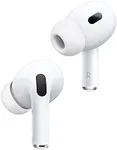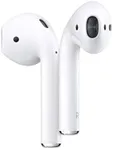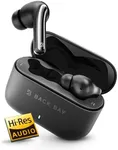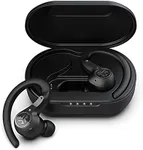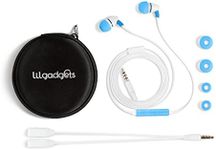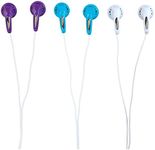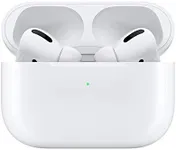Buying Guide for the Best Apple Airpods
Choosing the right wireless earbuds, like Apple AirPods, can make a big difference in your listening experience and everyday convenience. To make the best choice, it’s important to understand the key features and specifications that matter for how you’ll use them. Think about when and where you listen to music, take calls, or use voice assistants, as your habits will guide you toward the most useful features for your lifestyle. Let’s break down the key specs and what they mean for you.Battery LifeBattery life refers to how long the earbuds can play music or handle calls on a single charge, as well as how much extra listening time the charging case can provide. This spec matters because it determines how often you’ll need to recharge your earbuds, which affects convenience if you’re on the go or use them for long periods. Short battery life (around 4-5 hours) might be sufficient for light users or short commutes, while longer battery life (6 hours or more) suits people who listen to audio throughout the day or travel a lot. Consider your typical usage patterns to decide what’s right for you.
Fit and ComfortFit and comfort describe how well the earbuds sit in your ears and how comfortable they are during use. This is important because uncomfortable earbuds can become irritating, especially during long listening sessions or workouts. Some earbuds are 'one-size-fits-all,' while others come with multiple ear tip sizes for a customizable fit. Choose earphones that offer a fit that feels secure for you, especially if you plan to move around a lot or use them during physical activities.
Sound QualitySound quality covers how clear, balanced, and rich the audio is. It’s essential because good sound enhances your music, calls, and media experience. Earbuds can vary from bass-heavy to more balanced or focused on clear vocals. If you love music and notice details, look for earbuds noted for high sound quality with balanced audio. For casual listeners, standard sound is often good enough. Think about what kind of audio experience makes you happy, and choose accordingly.
Noise Cancellation and TransparencyNoise cancellation is the ability of earbuds to reduce or block out background sound, letting you focus on what you’re listening to. Some earbuds offer active noise cancellation, which is great if you want peace on busy streets, flights, or public transport. Others have a transparency mode that lets in outside sounds for safety, which is useful when you’re walking or cycling. Decide if you want to tune out the world or need to stay aware of your surroundings, and pick accordingly.
Controls and Smart FeaturesControls and smart features refer to how you interact with your earbuds, such as tapping to play or pause music or using voice assistants for hands-free help. This is important for convenience, allowing you to control your music or take calls quickly without reaching for your phone. Some earbuds offer more advanced features, like automatic ear detection or easy device switching. If you prefer simple controls, basic models can suffice; for tech-savvy users, advanced features may be more appealing.
Water and Sweat ResistanceWater and sweat resistance is about how well your earbuds can handle moisture from rain or sweat. For most people, a basic resistance rating helps prevent damage during workouts or outdoor activities. If you exercise regularly or plan to wear them in various weather, look for higher resistance ratings. If you mostly use them indoors or for office calls, this feature may not be critical.
Device CompatibilityDevice compatibility is how well the earbuds connect and work with the devices you use, whether it’s a smartphone, tablet, or computer. Some earbuds are especially optimized for certain ecosystems and offer extra features if you use matching devices. Make sure your earbuds will be easy to pair and support all the features you want with your preferred devices, whether they are from the same brand or not.
